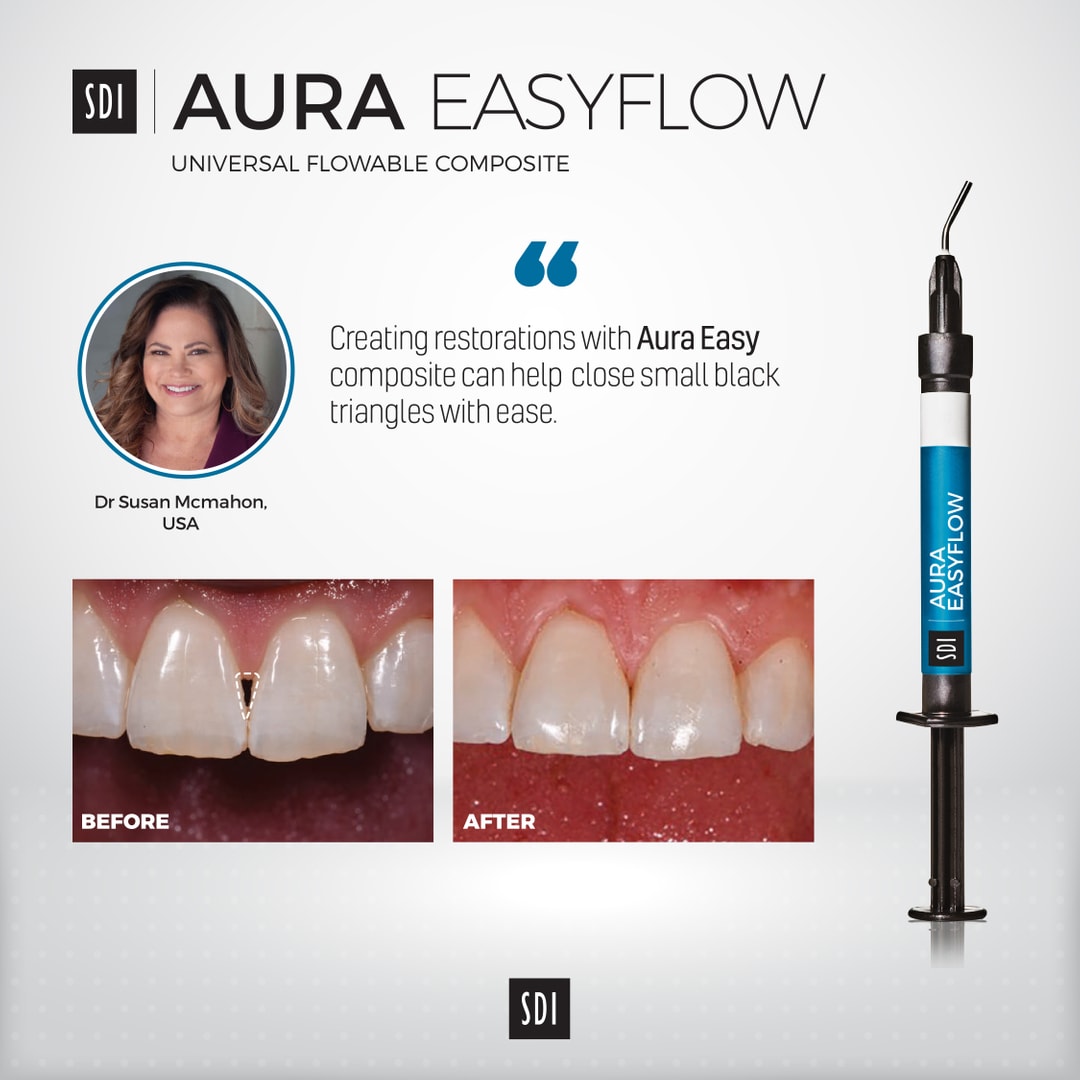 S2K Commerce - Products Dropdown
S2K Commerce - Products Dropdown
 Web Content Viewer - Blog
Web Content Viewer - Blog
Easily Close Small Black Triangles with Flowable Composite
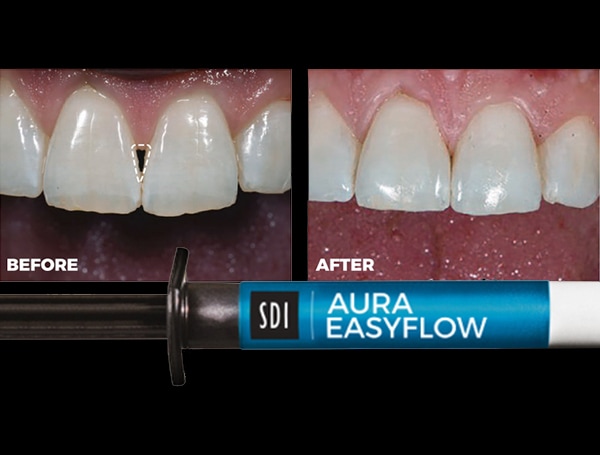
Black triangles, also known as open gingival embrasures, are a common dental issue seen in about 30% of adults.
It is the space or gap of missing gum present at the cervical embrasure above the contact point. The main determinant of the interproximal papilla height is the underlying bone crest (ie, osseous peaks) Research shows that the distance from the base of the contact area to the crest of bone correlates with the presence or absence of the interproximal papilla. When the distance is less than 5 mm, the papilla completely fills the interproximal space almost 100% of the time, but when the distance is 7 mm or greater, the interproximal space is completely filled in only about 25% of the time.
Appearance and self-esteem have long been intertwined. So as our social media and selfie culture continues to grow, it follows that more people are seeking out cosmetic dentistry as a way to enhance their appearances. Often they seeking care for relatively small dental issues that are of big concern to them. Patients’ perceptions of Interdental "black triangles" were rated as the third most disliked aesthetic problem below caries and crown margins. 2 Black triangles are very prevalent and approximately 40% of adult orthodontic cases may result in black triangles.
Black triangles may be caused by a number of conditions including:
- Decreased interproximal bone height from periodontal disease, attachment loss, periodontal surgery, or trauma
- Excessive embrasure space and deficient papilla form affected by root angulation, interradicular distance, crown form, and distance between alveolar bone and interproximal contact
- Patients’ biologic width and inherent or thinning gingival biotype
- Other: Age, patient habits, iatrogenic issues.
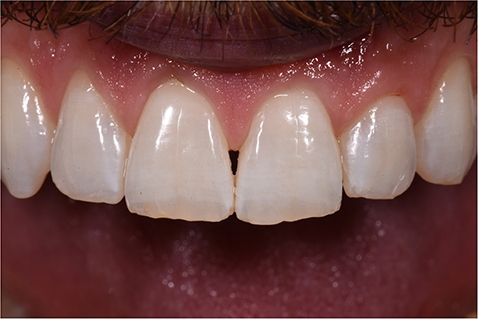
Depending on the size, position in the esthetic zone, and cause of the black triangle, there are several treatment options. The options include surgical, orthodontic, indirect and direct. For small black triangles like in this case, direct restoration in the best and most conservative approach. Many clinicians find direct restoration in this area to be challenging often resulting in restorations with ledges and voids that collect biofilm and stain. There are several newer techniques including injection molding that improve the results. The following case demonstrates an easy technique that employs traditional sectional matrix bands and Aura Easy Composite, SDI and Aura Easyflow, SDI. Aura Easy, a universal nanohybrid composite combines a low shrinking resin system and a unique morphology of ultra-high density (UHD) glass filler. It can withstand high compressive forces while still delivering amazing handling and polishing properties. Therefore, it can be utilized in anterior as well as posterior restorations without compromising strength or esthetics. Aura Easy comes in four shades that cover the spectrum of the vita shade guide. It blends beautifully with natural enamel.
This patient did not like the black triangle present between his central incisors. He complained that “It always looks like I have something stuck in my teeth”.
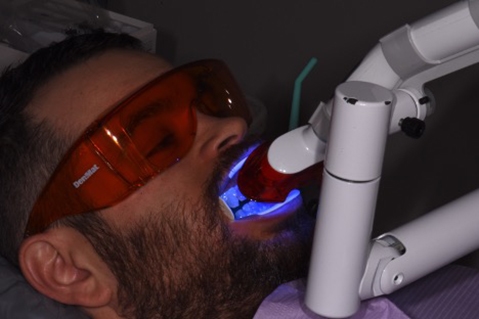
Prior to closure of the black triangle, the patient was whitened with Pola Rapid in office whitening.
Attaining proper contour interproximally is difficult with traditional mylar strips or matrix bands. Using a small sectional matrix band placed vertically gives the perfect contour and can be adapted for an undetectable margin with no overhang.
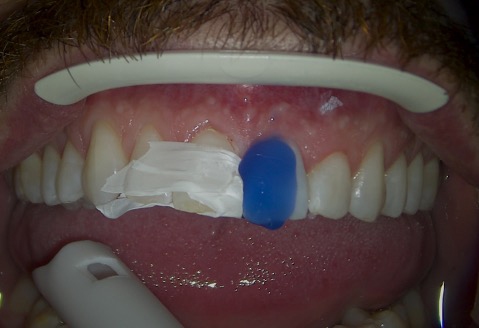
First the left central incisor is isolated, and the enamel is etched, 37% phosphoric acid. After rinsing and light drying, Zipbond Adhesive, SDI is applied, air thinned and cured.
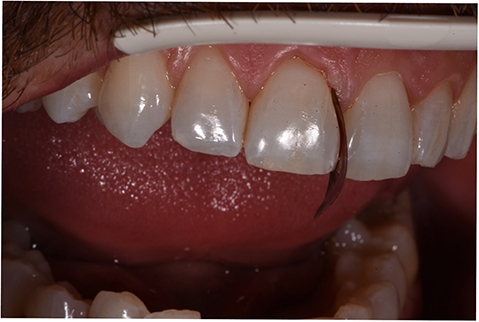
The matrix band is placed interproximally. It is apparent the contour of the band will allow for a well-adapted closure of the black triangle.
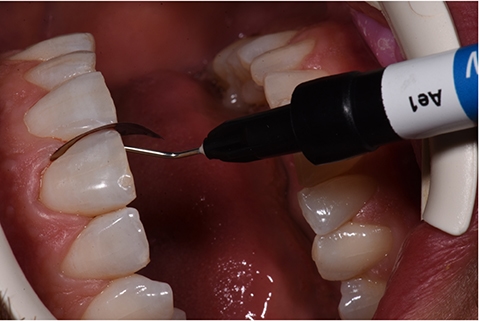
Aura Easy AE1 is applied and contoured to the band. Aura Easyflow is used to fill on the lingual as necessary.
After finishing and polishing.
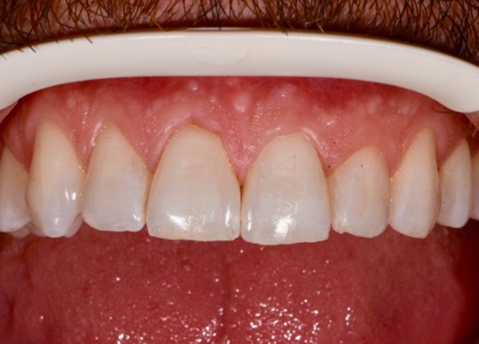
Sources
Tarnow D, Magner AW, Fletcher P. The effect of the distance from the contact point to the crest of bone on the presence or absence of the interproximal dental papilla. J Periodontal. 1992; 63(12):995-996.
Cunliffe J.& Pretty, I. Patients’ ranking of interdental “black triangles” against other common aesthetic problems. The European Journal of Prosthodontics and Restorative Dentistry 17, 177–181 (2009).
Kurth JR, Kokich VG. Open gingival embrasures after orthodontic treatment in adults: prevalence and etiology. Am J Orthod Dentofacial Orthop. 2001;120:116-123.
Jihyon Kim, DDS, and David J. Clark, DDS, Full Mouth Black Triangle Treatment Protocol, Dentistry Today, 2017; 8
Tanaka OM, Furquim BD, Pascotto RC, et al. The dilemma of the open gingival embrasure between maxillary central incisors. J Contemp Dent Pract. 2008;9:92-98.
